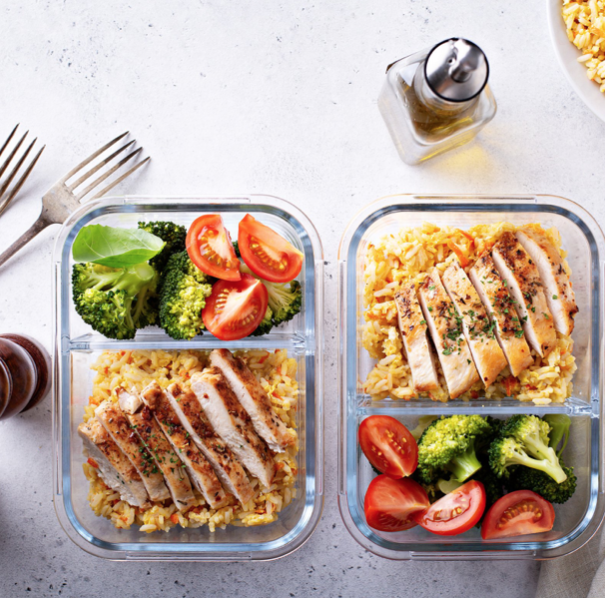- Fast results
- 4,000+ locations
- 4.8 star rating
Need Help? (888) GET LABS



Once you decide to lose weight, the following days will feel like a whole new version of hell. True, weight loss has never been easy.
So, if you encounter a supplement or a program that suggests otherwise, it may be time to ask some questions.
Nonetheless, it is not impossible to shed some pounds and achieve the perfect weight and fitness you aim for. Many people who have successfully lose weight and gained impeccable health can attest that the difficult part is mostly at the beginning.
As your body gets used to the change in diet and the degree of physical activity you do, the process becomes smoother and less painful.
A critical part of your weight loss plan is anticipating the obstacles you will most likely face. Dealing with these obstacles in the best possible way will give you a great start in your weight loss journey and help you sustain the process in the longer term.
Some may say these barriers are simply excuses, but they hold merit as impediments to weight loss.
So, without further ado, let’s look into the most common obstacles you may face when trying to lose weight.
All weight loss plans require careful dietary plans that include carefully selected healthy foods.
Research has shown that meal planning has relevant contributions to weight loss and obesity prevention.
Most meal plans are based on dietary recommendations by specific weight loss programs. Others are simply trends usually influenced by fitness instructors or, in most cases, celebrities.
Here are some examples of diet plans commonly adopted by people who want to lose weight:
1. Ketogenic diet
2. Paleo diet
3. Plant-based diet
4. Low-fat diets
5. Low-carb diets
6. The DASH diet
7. The Mediterranean diet
The efficacy of these diets can be subjective. Nonetheless, these types of meal planning have two things in common.
First, they all limit caloric intake by limiting specific types of food.
Second, all of them require careful meal preparation, which means you will have to take more effort when doing your groceries and cooking your food. The latter is a common weight loss obstacle, especially for people who are always on the go.
Those who work for most of the day lack the schedule allowance to plan and prepare their meal. As a result, they often rely on ready-made foods usually packed with excessive sugars, salts, and fats. In short, these are food ingredients that are the antithesis of weight loss.

1. Buy Pre-made or pre-cut meals
The easiest way to secure healthy meals without the hassle is to purchase pre-made foods that match your dietary plan. Likewise, in some fruits and veggies, it could help if you buy those that are already peeled and sliced.
2. Cut your fruits and veggies at once
If you are a fan of all organic fruits and veggies, you’d probably want them in their raw form. If that’s the case, make sure you allot a certain period for peeling, cutting, and storing them in your fridge. You can do it during your free time or on the weekend for example.
3. Store your meals by batch
Say you have devoted your entire Saturday to grocery and meal planning. Consider taking the same day to prepare your week’s meal. Then, assign and store them by batch to minimize any actual day prep time.
4. Aim for simple recipes
The best thing about healthy meals is that you can go as organic as you can be, which means you can go for simple, even non-cook recipes.
Aiming for complicated and time-consuming cooking can be frustrating. So instead, start with simple ones and more your way up when you’re comfortable enough with the new palette.
Here’s one reality that often shocks people who are planning to lose weight. Healthy foods can be more expensive than their unhealthy counterparts.
Several studies attest to this truth as prices of healthier meals were compared with common foods in consideration of calories and servings.
Furthermore, based on research conducted by the Harvard School of Public Health (HSPS), healthier diets consisting of fruits, vegetables, nuts, and fish are costlier by $1.50 compared to unhealthy diets of processed meat and refined grains.
This general idea that healthy foods are more expensive constantly hinders weight loss activities, especially among people with low income.
As much as exercise and other physical activities significantly contribute to weight loss, dietary patterns are still imperative.
1. Look for budget-friendly eats
While it is true that some healthier options are more expensive, it doesn’t erase the fact that there will always be cheaper alternatives.
Elaine Magee, a dietitian, and contributor for WebMD, listed healthy foods that cost less than $2. It includes brown rice, multi-grain pasta, whole wheat bread, oats, non-fat Greek yogurt, frozen vegetables, and dried lentils.
2. Consider planting your own fruits and veggies
If you genuinely want to save money and time from constantly going to the grocery store, consider planting your own stock.
Some fruits and vegetables can grow indoors. You have your herbs, tomatoes, avocados, mushrooms, lemons, bell peppers, and microgreens to choose from.
If work is demanding or household chores are piled up, more often than not, there is simply no room for exercise anymore.
When you think of weight loss, the image of spending ample time in the gym is pretty common. This is because exercise or working out is a critical ingredient of weight loss.
Shifting your diet helps cut your caloric intake, but some of the effects of this change, such as losing muscle mass, can be prevented with physical activities.
Furthermore, exercises burn calories faster, which also accelerates weight loss. By using these calories, your body has no choice but to utilize reserved fats for energy production. In turn, fats within your organs gradually diminish, lowering your risks for conditions like heart disease and diabetes.

1. Identify your free times
Regardless of how short they are, use your free time to do some physical work. If you can walk to the office instead of driving, by all means, do so.
You can also do some simple exercises while waiting for the kettle to burn. Whenever there is a window within your schedule, use it well for your weight loss journey.
2. Do physical activities that you enjoy the most
If you think that working out in the gym is the best, if not the only physical activity for weight loss, then you are on the wrong side of the boat.
Any physical activity, including sports, yoga, and Pilates, can significantly alter your body.
Choose an activity that you enjoy. If you’re into dancing, then focus on that. If you love swimming, then you’re in for a treat since it is one of the most effective physical activities for weight loss.
3. Maximize the use of free media
You don’t actually need to go to the gym to shed some pounds. The internet has plenty to offer that will keep you moving. Find a YouTube video on exercise sets, Zumba dances, Yoga, and other forms of exercise.
All you need is a large enough space for you to do the exercise, an internet connection, and a tv/computer/smartphone.
There’s no doubt that people who are overweight wish to lose some pounds. However, only a few successfully do so.
Evidently, the desire for good health and fitness is overshadowed by many factors. A common one is the lack of motivation to start a weight loss plan.
While the products of weight loss efforts are appealing, it is the must-needed alterations in weight loss-related behaviors that keep people from starting or finishing an elaborate plan.
As a result, lifestyle interventions fail to materialize since the changes demand not just physical efforts but mental strength as well.

1. Narrow down your “Big Why”
If you’re simply doing weight loss plans for good health, that is a little vague, and your brain will begin to argue that the goal can be achieved in some other ways. But if you are specific with your “Big Why,” you will be more conscious.
For example, you want to lose weight to prevent diabetes since the disorder runs in your family. Narrowing down your reasons appeals to the logical side of your brain.
2. Record your progress
Pride is a good instrument for motivation. Think of people who are recording their progress. They take before and after pictures, keep track of their losses, and share their overall journey.
Seeing your development can trigger the feeling of pride through the release of dopamine in the brain. That winning feeling will keep you motivated.
3. Look for social support
Sometimes, you will need the support of a common community, your friends, or your family to lose weight. These are the people who will remind you of your goals, recognize your efforts, and see your progress firsthand.
It is pretty frustrating when you are far along in your weight loss journey, and you see nothing or too little has changed. Most of the time, this is caused by underlying conditions that influence weight loss.
For some people who are aware of their health problems, these illnesses are critical obstacles in losing weight. This is because these hormones affect metabolism and normal organ functions.
Here are diseases and disorders that could prevent weight loss:
1. Hormonal changes or imbalances
2. Polycystic ovarian cyst (PCOS)
3. Hypothyroidism
4. Cushing’s syndrome
5. Depression
6. Chronic inflammation
1. Check Your Hormones
Your hormones will say a lot about your metabolism, and by extension, your ability to lose weight. Therefore, hormone testing is a critical part of your weight loss plan. Make sure to have them checked before going on a specific diet or signing up for a gym membership.
2. Take a Weight Loss Profile Blood Test
If you want to get your baseline data and uncover potential medical obstacles for weight loss, get the weight loss profile blood test. You will have a clear understanding of your body and how it could respond to your choice of weight loss plan.
3. Consult a doctor
To save yourself from wasting time and energy on weight loss plans that could go down the drain, always consult a doctor. Book an appointment with your doctor and raise your concerns regarding weight loss.
A weight loss plan is not easy to start. It gets even more challenging to finish. Many people successfully shed some pounds only to find themselves gaining more eventually. If you want weight loss to be long-term, it is best to be aware of your personal obstacles.
Challenge these obstacles daily. Whether it’s about preparing healthy meals, choosing the cheaper alternatives, exercising regularly, treating related medical conditions, or finding that ounce of motivation, make it a part of your routine.
In no time, you will add up on the pile of weight loss success stories that inspire millions of people in no time.

© Copyright 2025 Personalabs. All Rights Reserved.